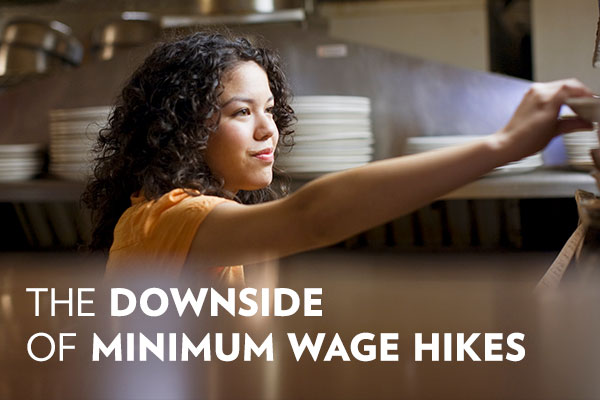Commentary

Wolf’s Wage Mandates Undermine Workers
Lawmakers are locked in a battle with Governor Wolf over new overtime rules that will mandate additional payroll costs for over 82,000 employees. Meanwhile, the governor is once again calling for a higher minimum wage in this year’s state budget.
It’s a one-two punch that could send our economy reeling. But in 2020, it is increasingly unnecessary.
Thanks to Pennsylvania’s current growth, wages are already rising—without new laws and mandates. Employers aren’t waiting for the government to give them permission to pay their workers more. For workers, this is a seller’s market.
The Pa. Department of Labor and Industry’s 2018 Minimum Wage Report found that in 2018, an estimated 96,300 Pennsylvania workers earned minimum wage or less. The number of minimum wage workers has not been that low since 2006 (95,200), and the number decreased 9.6% (10,300) from the previous year.1
Minimum-wage jobs are simply not as common as they once were, even for early-career workers. Pennsylvanians earning at or below the minimum wage has decreased from 5% to 1.5% of workers between 2009 and 2018.
Graph: Pa. Workers Earning Min Wage
And across all income levels, wages are up. Data from the Bureau of Labor Statistics shows average hourly wages rising from $20.15 in 2007 to $26.52 in December of 2019.2
Graph: Pa. Average Hourly Wage 2007-2019
House Majority Leader Bryan Cutler recently remarked, “Pennsylvanians are earning more today than ever in our state’s history. According to Gov. Tom Wolf’s Department of Labor and Industry, the average wage in our state has increased by about 25% over the last 10 years.”
The governor’s minimum wage and overtime threshold mandates are trying to fix a problem that’s already solving itself. It’s a cheap political ploy that could do plenty of damage: a recent Independent Fiscal Office study found that a $12 minimum wage would result in 34,000 lost jobs.
The negative consequences of the moving the mandatory overtime pay salary threshold from $35,568 to $45,500 by 2022 would likely be even more destructive. Comments on the proposed regulation have poured in from business owners and non-profit leaders warning the rule would force them to convert existing salaried positions into hourly positions—essentially a demotion for their employees.
The United Way noted this change will add the cost of monitoring employee hours, limit the ability of nonprofits to hold events off-hours, and ultimately reduce resources available to invest back into the community.
MHY Family Services, a provider of mental health services to children in 36 counties and 122 schools, noted the change will, “revise the salary threshold of executive, administrative and professional salaried workers well beyond any funding and revenue trends, and put at risk MHY’s survival . . . We cannot sustain the department’s proposal.”
If elected officials are worried about a living wage for every worker, they should first concentrate on the government-imposed barriers to higher wages. There’s no downside to eliminating excessive regulation.
For example, as Governor Wolf proposed in 2018, we should end occupational licensing for barbers, hair braiding, rental listing referral agents, and auctioneers. These fees and tests do nothing to protect consumers. They limit opportunity.
Pennsylvania should continue to remove work barriers for the formerly incarcerated, such as restrictions on where they can live and overly complicated probation procedures. And we should identify how our disjointed welfare system punishes work and transition to a “work first” system focused on helping individuals get into the workforce and stay in the workforce.
No one wants to force community non-profits and small businesses to layoff employees or close their doors, but experience shows that’s what happens when government sets wages.
1. Pennsylvania Department of Labor and Industry, Minimum Wage Reports: Pa. Department of Labor and Industry’s 2018 Minimum Wage Report
2. U.S. Bureau of Labor Statistics, State Employment, Hours, and Earnings: https://www.bls.gov/sae/data/home.htm